How Afghanistan Went From Hippie Haven to Battleground (Audio and Transcript)
Truthdig Editor in Chief Robert Scheer and journalist-author Jere Van Dyk discuss Van Dyk's time in the beleaguered country as a reporter and as a hostage. [Transcript added.]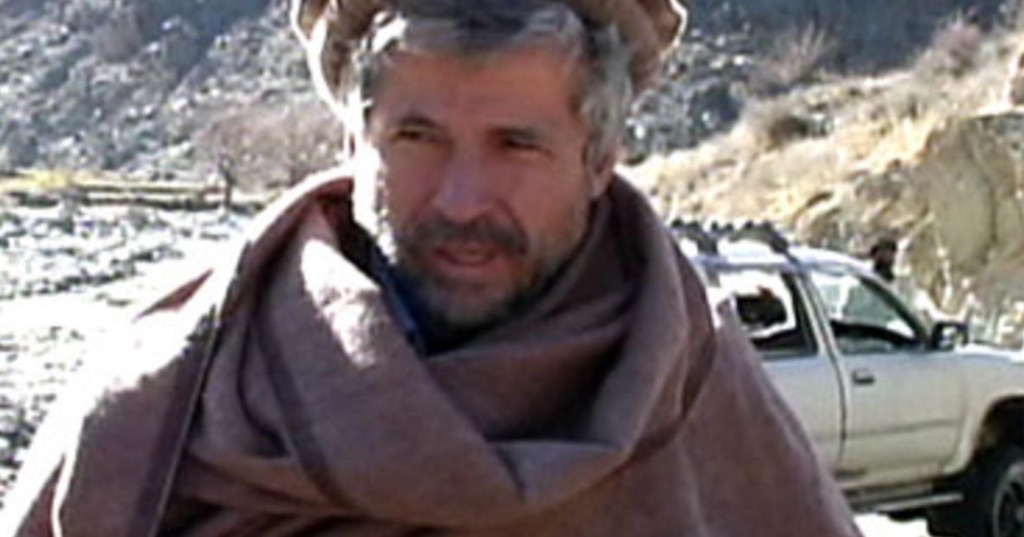 Jere Van Dyk. (CBS News)
Jere Van Dyk. (CBS News)
In this week’s episode of “Scheer Intelligence,” host and Truthdig Editor in Chief Robert Scheer gets together with Jere Van Dyk, who has reported on Afghanistan since the 1970s and has written extensively about the nation’s evolution from a hippie haven to a battleground for the war on terror.
Van Dyk’s most recent book is “The Trade: My Journey into the Labyrinth of Political Kidnapping,” which details his search for answers after being kidnapped by the Taliban in 2008.
In his conversation with Scheer, Van Dyk talks about his years in a surprisingly progressive Afghanistan in the early 1970s and the United States’ funding of the mujahedeen in the ’70s and ’80s in hopes of turning the country into the Soviet Union’s Vietnam.
He also recounts his harrowing experience of being held captive by the Taliban and explains why he returned to Afghanistan years later despite great personal risk.
Listen to the full interview in the player above or read the transcript below, and find past editions of “Scheer Intelligence” here.
WATCH: Political Kidnappings Have Become a Billion-Dollar Industry
–Posted by Eric Ortiz
Full transcript:
Robert Scheer: Hi, this is Robert Scheer with another edition of Scheer Intelligence, where the intelligence comes from my guests. In this case, Jere Van Dyk, an experienced journalist who worked for The New York Times and CBS, and in that capacity covered Afghanistan, Pakistan, this central zone of the war on terror. But he is one of the individuals in this country most familiar with the history of that region, and the experience of the United States in that region. And why don’t we begin there? We’re going to end with–or not end with, we’re going to proceed to the question that you became a hostage, and have seen the other side of it. But let’s begin with the time of innocence. You were a young man, and you were trying to see the world. And take us back there.
Jere Van Dyk: I was a student in Paris. I’d been in the army; I was on the, using the GI bill. And I had learned in Paris that there was a business that you could drive an old car in Europe, all the way across to Asia, to Afghanistan or to Pakistan, India, on what became known as the Hippie Trail. And you could sell the car for more money than you bought it in the West, and you could use that money to get an airline ticket and fly home. And I thought that would be a great adventure, something I wanted to do. I called my parents in Washington state and asked if my younger brother, who had just started college, if he could drop out of school and join me. And to our surprise, even today we don’t know why our mother said yes. But our parents agreed, he flew over, we bought an old Volkswagen in Germany, drove it across to Afghanistan where we ran out of money. At that time the road was clear; Iran was our ally.
RS: What year would that have been?
JVD: This was 1973.
RS: Ah.
JVD: We arrived on the Afghan-Pakistani border, and to me, it was my Lawrence of Arabia land in my mind, in a certain way. And I imagined riding a camel caravan off into the distance; it was very romantic. And we drove down a road that the Soviet Union had built from Herat on the Iranian border to Kandahar, and then took another road, one with concrete, built by the Soviet Union. And the second one built from Kandahar to Kabul was built by the United States. That was the competition between the two major powers in the world then. And we arrived in Kabul, where schoolgirls dressed like Catholic schoolgirls here in the U.S., short skirts and long socks, and carried books and laughed in the streets. And there were about 5,000 to 6,000 hippies living there; in the evening you could hear the sound of the Rolling Stones mixed with the evening call to prayer. Women dressed like women in Europe. There were nine movie theaters, outdoor cafes. It was, in one way, to me like a small town; at the same time, extremely romantic. But what we did not know as young men then was that that same year, 1973, the former prime minister, a man named Daud Khan, overthrew his first cousin and brother-in-law, the king of Afghanistan, Zahir Shah, ending over 200 years of Pashtun monarchy. The Pashtuns are the largest ethnic group in Afghanistan and across the border in western Pakistan. He had used leftist parties to help him gain power, to help him with the cadres that he needed to mount his, in effect, his coup. At the same time he reached out, or had reached out when he was prime minister before he became president, to President Kennedy, asking for foreign aid. And—this was during the Cold War—wanted to maintain Afghan neutrality. We said no, the U.S. said no; he went to the Soviet Union, which was very happy to provide some assistance, thereby gaining the nickname of the Red Prince, which upset a number of professors at Kabul University and mullahs, two of whom in particular went to Al-Azhar University in Cairo, the oldest university, oldest Sunni, most prominent Sunni university in the world, where they fell in with the Muslim Brotherhood. Brought back the books of Sayyid Qutb, who was the intellectual head of the Muslim Brotherhood, who eventually was, who had already been, in fact, executed by Nasser in Egypt. And he translated these books, a man named particularly Burhanuddin Rabbani, who later became president of the mujahideen government of Afghanistan—I’m getting ahead of myself a bit. But he created something called the Young Muslim Movement. And at that time, like throughout the western world, whether it was in Berlin to Berkeley, there was this fervor on campus—hard to imagine, but it was the only place in Afghanistan where young men, and sometimes young women, were able to come—they would have to have a certain amount of money—to come from around Afghanistan and gather together. And there was conflict between Marxists and we’ll call them Muslim activists.
RS: Let me just interrupt you for a second. So you’re actually describing a time in the life of Afghanistan where people forget—and this really was true under the king before—where women could go to school. And it was moving towards a secular society, more so. And somehow, this progression of Afghanistan towards modernization got embroiled with the Cold War. This is one of the great tragedies of history, really, ‘cause when we think about how it has affected our own country. And if left to its own devices, this is a country that would have sorted out modernization on its own terms: How does religion fit in, how does secular. And suddenly, because of the shifting government, there was the specter of communist influence, Russian influence, raised in the West. And there was the beginning of jockeying for power over Afghanistan that was thought to have strategic significance, being between India and Pakistan and so forth, and on the border with the Soviet Union. This is where the modern drama really starts, at the time when you as a young person, soon after, arrived there.
JVD: I would say that the overthrow of the king by his brother-in-law and the creation of this new form of government by this man that the Muslim activists called the Red Prince led, if not directly certainly indirectly, to 9/11. Because at that time, this young Muslim movement in, centered on campus, backed by Rabbani, upset at the progressive, if you will, views of the new government, of this new form of government, fled—about 12 of them—fled to Pakistan, where—and I interviewed the man who took them in, a major general, Naseer Babar, who was interior minister later under Benazir Bhutto. And he took in these 12 men, he gave them code names, he told me; one he called the baker, one he called the electrician, one he called the mason. And he gave them Pakistani passports, put them in the Pakistani army, where they received military training. And he told me at that time: “And then I went to the U.S. embassy and asked for money.” He didn’t tell me if the U.S. gave them any; I’m still trying to find out. But what he did over the next two years, they trained in the army. In 1975 these young men—and more joined them—and Rabbani, their spiritual and intellectual leader at Kabul University, came over and was their head. And in 1975, calling themselves now the mujahideen—which means in Pashto and Dari as well as Arabic, holy warrior—they mounted what was a, they attempt a coup, and they attack various government installations in Afghanistan. Thereby introducing the mujahideen to the world. They continued fighting, most of them were killed, the rest were thrown in prison; some survived, the most famous of whom was Ahmad Shah Massoud, some of you may know, who later became the most famous guerrilla fighter against the Soviet Union. July 1979—and we did not know this until Robert Gates, former Secretary of Defense, published his, and head of the CIA, published in his memoir of his time with the CIA, it’s called [In the Shadows]. And in 1998, when Zbigniew Brzezinski, former national security advisor to President Jimmy Carter, said in an interview with a French magazine that the U.S. began to fund the mujahideen in 1979 in July, six months before the Soviets entered Afghanistan. In order to lure the Soviet Union—this is Brzezinski talking now, it’s a very close paraphrase—lure them into Afghanistan in order to pay them back for supporting our enemy the Viet Cong and the North Vietnamese, some of which, we’ve seen this in the recent documentary on public television on the Vietnam War. Thereby forcing them into what they considered, to what Brzezinski thought would be the Soviets’ Vietnam.
RS: You have a history in this area that very few have. Because then you leave Afghanistan, and you worked for Scoop Jackson, the senator from Washington, in Washington, right?
JVD: When I—yes, that’s true, I, we—
RS: A very hawkish senator. So you had experience in Washington; you had gone through the University of Oregon, you had been an athlete of sorts, and all that sort of thing. But then you decide you want to go back and cover this part of the world, and you do so for The New York Times, right, and then eventually for CBS. You become a journalist. And you also worked on a movie that gives, created a certain image for the American public of how’d it all start, and it was called Charlie Wilson’s War. When was that movie made? And as I said, you were the consultant about Afghanistan for that movie.
JVD: That’s right, and that was in 2006. But to real quickly go through what you just said, yes, my brother and I made our way back to the West. And in 1979 I watched television and I watched the Soviet tanks come into Kabul, and I said I have to go back. I didn’t know why, but I was driven to do it. So I made arrangements. And I had worked with—I’m from Washington State, where Senator Jackson was from; I was, personally I was not at all happy about his pro-Vietnam stance. But I liked him as a man; he was very good to me. I liked his domestic policies, particularly regarding the environment. Less than two years after the Soviet invasion, I made arrangements with The New York Times, and I went back to Afghanistan. But I flew, as you had to at that time, to Pakistan, met all the various then-mujahideen political parties; these mujahideen were on their own, now there were seven political parties. And they were receiving funds at that time; I didn’t know it, but what eventually came about was that—this is made clear in the book Charlie Wilson’s War, and they deal with it somewhat in the movie–we began to, with our ally Saudi Arabia, to a degree with the Chinese but primarily with Saudi Arabia, Wahabi Saudi Arabia, which had its own agenda, far more radical, far more fundamentalist, if you will, than Hanafi Islam. Enabled the Saudis to make tremendous inroads into this area with their missionaries and their evangelization and building up mosques, dollar for dollar. For every dollar that the U.S. put in, the Saudis put in a dollar. And this was brought out in Charlie Wilson’s War, and other allies also involved, the Brits, the French, but we and the Saudis were the principal ones. And we pumped approximately—the numbers aren’t, I’m not sure what the exact numbers are, we don’t know—but at least five billion, “b,” billion dollars into Afghanistan in order to destroy, bleed to death as much as we could the Soviet Union. The mujahideen became our proxy army. I went back to Afghanistan, 1981, went in, and I was sent by one particular mujahideen group in Peshawar, which is the border city in Pakistan, up into the mountains, and lived with a man named Jalaluddin Haqqani, his brother Ibrahim Haqqani, and about 20 men in what were then called the Haqqani mujahideen, a very small group of men. I became close to them, wrote about them extensively in my articles and in a book later. Today, that group of men, those small group of men, are called the Haqqani Network: The most lethal, the most efficient, arguably the deadliest terrorist organization in the world, because they’re older and more effective and have been around this for so long, and are so lethal—than ISIS. They are the closest to, seen as the closest to the Arabs, and it has been said that had the Haqqanis wanted to, they could have turned over the entire leadership of Al-Qaeda, including Bin Laden, to the United States after 9/11. We all know what happened after this; the war continued, the Soviets were eventually forced to leave in 1989; peace accords were more or less established among the various parties. The United States left, washed our hands of it, the mujahideen government came to power, they fought with one another, they became corrupt, they angered people. Out of which rose, in southern Afghanistan in Kandahar, which is really the heart or the capital of the Pashtun empire, if you will, a group of students that called themselves the Taliban—“Talib” means “seeker” in Persian and Pashto—the seekers of the truth; plural is Taliban, a Talib is one, Taliban plural. And they wanted to cleanse the land to create, finally, a true Muslim government. Somewhere along the line, sometime about 1994, the Pakistani government took over the Taliban. And the Pakistani government has its own agenda, and they began to back the Taliban by 2006—
RS: That’s an explosive statement, “The Pakistani government took over the Taliban.”
JVD: —the Taliban. There’s a wire, if you will, from the U.S. embassy to Washington, and it was released under the Freedom of Information Act by Washington University in Washington, D.C. Ah, George Washington University, excuse me. And, in which it says that Naseer Babar, the same man who I interviewed who told me about how the, how he trained the mujahideen, the same man, is seen as the father of the Taliban. And one thing they did, they sent a convoy from Balochistan, which is the province that’s the size of California below Afghanistan, part of western Pakistan, a convoy from a place called Quetta across to Kandahar and wanted to go directly up to Herat, which is on the Iranian border, north to Soviet, then Soviet-central Asia. Because what Pakistan wants is to, they’re frightened–understandably–by being surrounded by India; they want Afghanistan to be used what they called strategic depth; they are a much smaller nation; they want to recreate, in some ways, the former mogul empire: do not just control Afghanistan. And don’t forget, when the Taliban came to power in 1996 only three nations recognized them: Saudi Arabia, the United Arab Emirates, and Pakistan.
RS: [omission] I’m talking to Jere Van Dyk, who has written an incredible book called The Trade: My Journey into the Labyrinth of Political Kidnapping. [omission] He himself was kidnapped in 2008, but has had a long history in the region as a reporter for The New York Times and for CBS. The reason you call this “a labyrinth of political kidnapping” in your most recent book, The Trade—your previous book was about your own capture, and we should talk about that—but you’re, you know, you knew these people quite well and yet you ended up being a victim. And you, first of all, you know, Daniel Pearl was certainly a very good journalist for The Wall Street Journal, very brave young man who wanted to know who these people were. And you were that type of reporter, actually, trying to figure out, who are these folks and why don’t they like us and what’s going on. So why don’t you take us to that story?
JVD: I was hired on 9/12, if you will, the day after 9/11, by CBS, as their Afghanistan, Pakistani, eventually Al-Qaeda consultant. And I went back to, and they sent me back to Afghanistan three weeks later. And what I wanted to do, and I had worked to do as a radio reporter and doing some television work, doing commentary and in some cases being a correspondent, what I was interested in was, how different are the Taliban from the mujahideen? And I wanted to find the Haqqanis, with whom I had lived in the 1980s, and I wanted to find other men that I knew from that time, because I wanted to see how they had changed, what they were doing today, and in a way, to relive some of that romantic time when I was much younger and it was quite exciting, dangerous but exciting. And so over a period of time, I was doing precisely that; then the opportunity to work on Charlie Wilson’s War came, and I did that. And then on my, I returned to Afghanistan, I had a writing contract, I finished that, and I got a call from Times Books, New York Times books division, and I sat, came back to New York—by then my, I had a beard and my hair was getting long. And the editor said, the tribal areas of Pakistan, it’s like a blank space on a map. The CIA does not seem to know where Bin Laden is. You know this area, you know these people. Do you think that you might be able to write something about this borderland? It was what I had been wanting to do; it was a gift. And I said yes, thinking that I could cross the border, I could go into this area, I could find the Haqqanis; if I found the Haqqanis, I could find out about the Arabs, and maybe with a little luck and a lot of perseverance, over time I could even find out something, maybe, about Bin Laden. And so I began in—at the same time I went in 2006, 2007, I went up along the Afghan-Pakistani border; I had one other project, I was trying to find out where Pat Tillman was killed; I went there and looked into that story. And the man I was with said, “Haqqani”—one of my guards—said “Haqqani is just across the border.” We were about three kilometers, a mile and a half, two miles from the border. And it instilled in me this desire, once again, to get to the Haqqanis. So I lived for the next seven months, off and on, disguised as an Afghan, beard is long, hair is long, trying, wearing Afghan clothes, using the Pasto that I, the degree to which I understood, and could speak the language, certainly not fluent but I knew some. Along the border I went with the Taliban four times; each time, they said they would protect me. They did. I crossed the border into Pakistan, sneaked across the border four times. On the—every time, everybody kept their word. On the fifth time, I was betrayed. Walking up in single file with two bodyguards and a fixer behind—a fixer, a guide behind us—into a valley, now in the tribal areas of Pakistan. And I saw a small tinge of black move behind a rock; I knew it wasn’t a black sheep, I knew it was a black turban; the Taliban wear black turbans, Muhammad wore a black turban. And I froze. And then the small black patch became very large, it became a turban, a man with a rifle rose, and 12 men like Indians in a movie spread out, came running down the mountain—kenna, kenna, kenna, get down, get down, get down—in other words, get down on your knees. And I froze, and I said, this is it. I’m a dead man. And I watched, I watched them take their rifle butts against my two bodyguards, and I tried to, still disguising myself, when the commander, the lead man came up to me holding a walkie-talkie, asked me in Pashto where I was going. And I tried to say where I’d come from and where I was going, and he saw through my accent immediately, said you’re not Pashtun. And they took me up onto a ridge, sat me down, blindfolded me, tied my hands, I heard the rifle cock. And I waited for, like a sheep, I was, I was, I was too dumb, if you will, as a sheep is dumb in that sense, I was preparing for the slaughter. And I was too much in shock to put up any resistance or to even, anything registered except to say, when I was facing west and I was saying goodbye to my family. They grabbed me, pulled me up, took me down, put me into a car. We drove on dirt roads, gravel roads, cement roads, I don’t know what we were doing, if we were going in circles, if we were going north, going south, I had no idea. Eventually they took everybody else out, put me in, I felt alone, and we went way up into a mountain. I said, they’re taking me up to shoot me alone. Got there, took me out, blindfolded, took me into a room. They took my blindfold off, and I was happy, because there I saw my two bodyguards and I saw the fixer; I was not alone. I looked over and I saw chains on the floor and a stake in the ground, and I was sitting on a rope cot. And I looked around, and it was baked mud walls, and I looked around for blood on the walls, and I said, I am in a Taliban prison. Deep in the mountains of Pakistan, and no one can find me. Two men came into the room later, they became our main jailers. One was tall, one was shorter and stockier. And one of my bodyguards said, I’ll take the tall one. And the other one said, I’ll take the shorter one. And they said, if they try to kill us, we have to kill them. And I asked myself, where’s the safety on a Kalashnikov? So my life at that moment changed completely. The hardest thing, the hardest part, mock executions. Two of them. When they line up and they put the rifle to your temple and sunglasses, fatigue jackets, Kalashnikovs, banana clips in their pockets, pull out a knife, the knife is about 12 inches long, it’s, they use it to slaughter sheep and water buffalo. But in my case, they put it back.
RS: To take the story—
JVD: Yeah.
RS: —after your kidnapping, people are going to have to read this book, The Trade: My Journey into the Labyrinth of Political Kidnapping, Jere Van Dyk. But I would like you to just give us some sense of what—you’re obviously either an incredibly brave and gutsy guy, or you’re a bit foolish. But after this harrowing experience of having been kidnapped and kept hostage, you then decided you wanted to find out, what is going on with this kidnapping? Who bailed me out? Because after all, the official U.S. government policy is not to pay ransom. And you had already written a book about your own kidnapping, and now you went back. And why don’t we just wrap this up by your telling us how you came to write the second book, and what your quest was in going back into the region?
JVD: When I returned, after I was released and I made my way and was brought back to the U.S., I asked the FBI—and the FBI is in charge of all kidnappings of all Americans overseas—I said there was a drone overhead for a month. Why was that there? Was that there to watch me, to protect me, to look for me? Or was it there for the Taliban who were coming back and forth? And he said, we brought all assets into play. In other words, I’m not going to tell you. And no one would tell me what happened. And I became haunted after a while, because I began to hear stories. I made a lot of contacts, and people would tell me things, and none of these things added up. I got approximately a hundred phone calls from my fixer and other men who I [was] convinced betrayed me. Haunting me, harassing me. A lot of things—and I could not work that much, people were afraid that I would, wouldn’t send me overseas to write anything. I wanted to write a book, another book, and do this, and no one would do this; they were afraid of what would happen. I finally got a contract in 2013. But even before that, six months before I got this contract, what really did it was one day I came home from work and there was a letter from the FBI. And the letter said, Dear Mr. Van Dyk—and this is a paraphrase—we regret to inform you, but we are closing your case. Please do not be offended, please do not be surprised; we know this comes as a bit of a shock, and it’s hard to comprehend, but we are closing your case. We reserve the right to reopen it, but right now it is over.
RS: The case being—
JVD: My kidnapping case.
RS: —how did you get released and why were you kidnapped—
JVD: My case was—meaning, they told me, the FBI told me when I got out: We’re going to get these guys, we’re going to find them. What I read between the lines was that they couldn’t do it. And I said to myself, they got away with it. Meaning the men who kidnapped me. Now I have to go back and find out who really did this. And so—and why. Because things didn’t add up to me. Very complex, but I didn’t quite, I didn’t believe the little that I was hearing over time. And so, and finally I was traveling in the Middle East, I had a writing project, I watched on television the murder of Jim Foley. Then I watched that of Steven Sotloff. And it was that night, after watching the murder of Steven Sotloff, I made the decision, I got on a plane and I called one man at CBS, the London bureau chief, and I said I’m going back. And didn’t tell anyone else. I was afraid, because my jailers said if you come back, we will not let the bird out of the cage the second time. And so I was afraid that as soon as I walked in that airport that they would, my name would be on a list, and they would get me. Because the Taliban just don’t wear beards and live up in the mountains; the Taliban are clean shaven, the Taliban are everywhere. And I went back; over time, I began to piece this together. But the most important thing is that I went back to see a man I’ve known for 40 years, the man who sent me to live with the Haqqanis, now a very prominent, in fact one of the most powerful men in the country. Chief negotiator with the Taliban in the peace talks they’ve had in Pakistan. And I was told by somebody who wrote me a letter out of the blue, an Al-Qaeda person in prison in the U.S. who’d seen me on television after the book came out, or heard me on the radio, and he said: You were caught in the crossfire between [inaudible words] family and others, and this is why you were kidnapped. And so I went to him and I told him the whole story in a hotel in Kabul, and he said: No. That’s not what happened. And he began to tell me what really happened in his mind. And he said, this is very dangerous, you must leave the country immediately. The next day, I went to see the former head of what’s called the NDS, which is the FBI-CIA of Afghanistan, and I told him my story. And his first question to me was, have you seen a movie called 12 Years a Slave? I said, I don’t know what that is, what is that? I’ve been traveling in the Middle East. He said, go see it. You’re that man. Because everybody who you think was on your side, was your enemy. Thus began my very long, very dark, murky journey, this labyrinth into the world of political kidnapping. It began with Daniel Pearl, who was executed by Al-Qaeda in 2002; their ransom demand was F-16s, that the United States send the F-16s that Pakistan paid for, and better treatment of Guantanamo prisoners. Terrorist groups don’t ask for F-16s. The next kidnapping after that was in 2004 by a man who had trained in Afghanistan, he became the head of Al-Qaeda, a man named al-Zarqawi, in Baghdad. They kidnapped Nicholas Berg, executed him. After that, the same year, three men were kidnapped from the U.N. in Afghanistan. The United States Army was frightened—not frightened, but upset, worried that this was going to spin out of control, did all that they could to find the—they did find the kidnappers—to resolve this. The interior ministry told me there was no ransom money, the U.N. told me there was no ransom money. My old friend said there was a 15 million dollar, euro ransom money. To this day we don’t know the truth.
RS: Yeah.
JVD: The kidnappings continued. And so now what we have is this explosive new industry that exists from Nigeria to Somalia, where Al-Qaeda has a protocol for how it deals with kidnapping. It is an explosive industry, $1.5 billion and growing industry, major American companies, NGOs, universities that send people overseas all have kidnap and ransom insurance. My story is the story of my journey back to find out who really kidnapped me, and it’s a—when I found out—I’m still, in fact, I’m still, I’m still shocked, I’m still nervous about it, who really did it, and why. I’m not going to say, you have to read the book.
RS: OK. It’s a whodunit. And I should point out, Jere Van Dyk has met with, he met with President Obama, he’s met with the families of people that have been taken hostage. He’s probably our leading expert on the whole question of hostage-taking and how to deal with it. But if you want the details of what becomes a whodunit story, and he risks his life to go back and figure out what is really behind these political kidnappings. The book is called The Trade: My Journey into the Labyrinth of Political Kidnapping. Jere Van Dyk, I want to thank you for coming here for another edition of Scheer Intelligence. The producers are Joshua Scheer and Rebecca Mooney. Our technical staff at KCRW are Mario Diaz and Kat Yore. And we have been recording from the Annenberg School for Communication and Journalism at USC. Sebastian Grubaugh is the engineer on the site, and we want to thank him and the University of Southern California for hosting us. Thank you.
Your support matters…Independent journalism is under threat and overshadowed by heavily funded mainstream media.
You can help level the playing field. Become a member.
Your tax-deductible contribution keeps us digging beneath the headlines to give you thought-provoking, investigative reporting and analysis that unearths what's really happening- without compromise.
Give today to support our courageous, independent journalists.
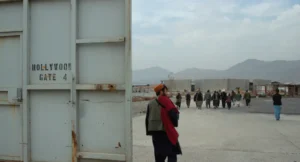
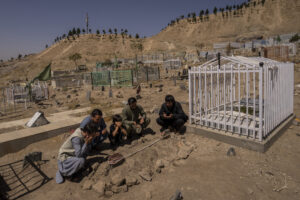
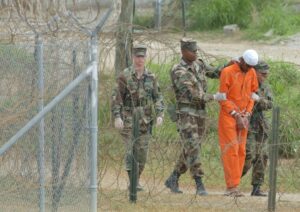
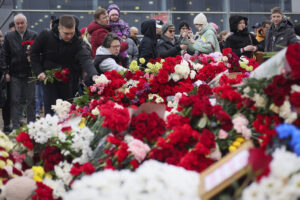
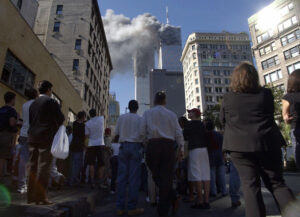
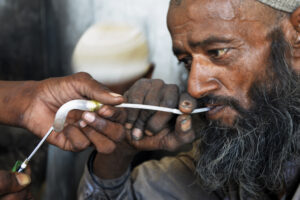
You need to be a supporter to comment.
There are currently no responses to this article.
Be the first to respond.